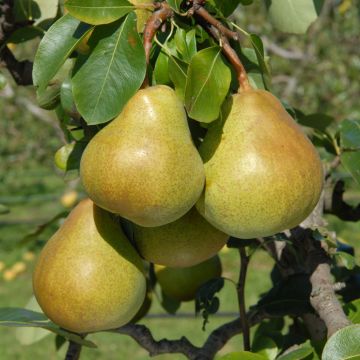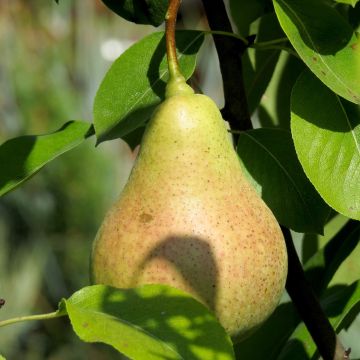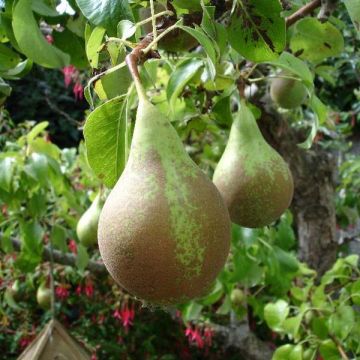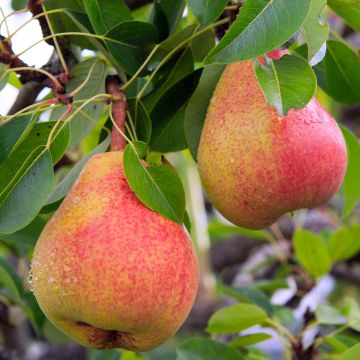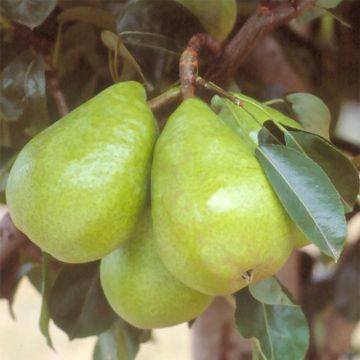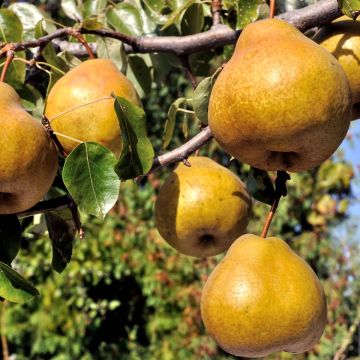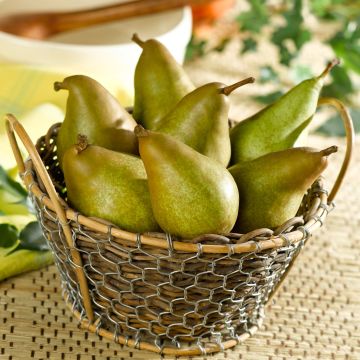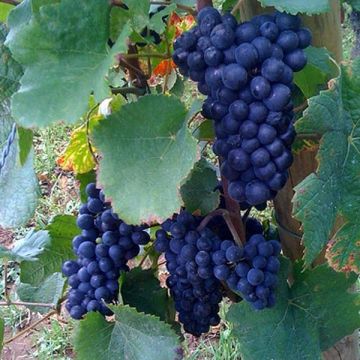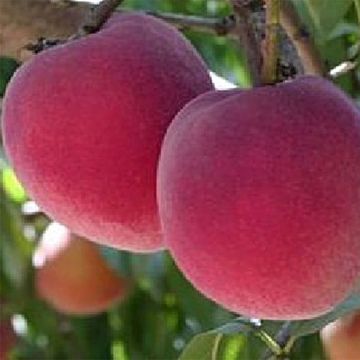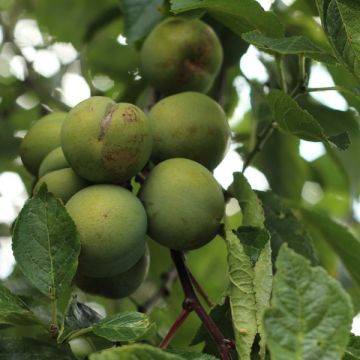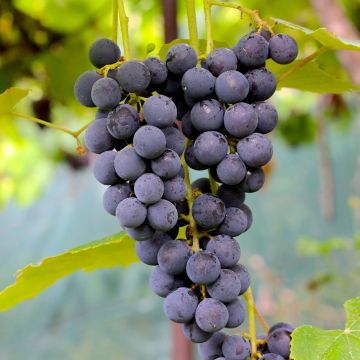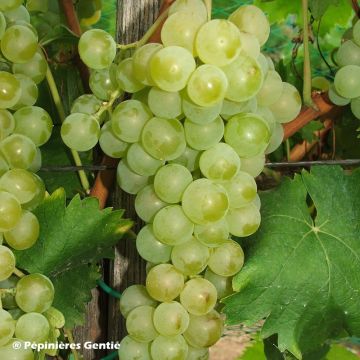

Pyrus communis Duchesse d'Angouleme - Pear Tree
Pyrus communis Duchesse d'Angouleme - Pear Tree
Pyrus communis Duchesse d'Angouleme
Common Pear, European Pear
Nous avons reçu un très beau Poirier,correspondant a notre attente.Merci à Sabrina pour le soin apporté à l'emballage.Je recommande cette maison pour son grand serieux.
Maurice G., 24/11/2017
Special offer!
Receive a €20 voucher for any order over €90 (excluding delivery costs, credit notes, and plastic-free options)!
1- Add your favorite plants to your cart.
2- Once you have reached €90, confirm your order (you can even choose the delivery date!).
3- As soon as your order is shipped, you will receive an email containing your voucher code, valid for 3 months (90 days).
Your voucher is unique and can only be used once, for any order with a minimum value of €20, excluding delivery costs.
Can be combined with other current offers, non-divisible and non-refundable.
Home or relay delivery (depending on size and destination)
Schedule delivery date,
and select date in basket
This plant carries a 6 months recovery warranty
More information
We guarantee the quality of our plants for a full growing cycle, and will replace at our expense any plant that fails to recover under normal climatic and planting conditions.
Description
The Duchess of Angoulême Pear Tree is a pear tree that can be cultivated up to an altitude of 1000m (3281ft). This hardy variety is vigorous and productive. It produces large, almost round fruits that are yellow with red markings when exposed to the sun. The flesh is semi-fine, sweet, and melting. Harvest takes place in November. The fruits can be stored well in a cool place (cellar or refrigerator). The Duchess of Angoulême Pear Tree is not self-fertile.
The pear tree is a tree native to central Asia, cultivated in China for 6,000 years. It was introduced to Europe around the 6th century. Although its development during the Middle Ages remained limited, there were already 200 varieties during the Renaissance. Since then, the number of varieties has continued to increase. The Duchess of Angoulême Pear Tree is a pear tree variety obtained from a chance seedling in 1812, in Maine-et-Loire. It was promoted and distributed by Anne-Pierre Audusson, a nurseryman.
If not susceptible to frost, the Duchess of Angoulême Pear Tree will still appreciate protected and sunny locations, so avoid frost-prone and windy situations. Easy to grow, it likes moist and deep soils, but dislikes excessively draining and calcareous soils. In winter, give it a handful of wood ash, rich in potash, which will improve flowering and fruit quality.
Its upright habit gives it a tall silhouette with a spreading crown. This habit facilitates harvesting and naturally improves the tree's ventilation, making it less susceptible to diseases. Its oval-shaped leaves, finely toothed along the edges, have petioles as long as the lamina and measure about 8 to 9cm (3 to 4in).
Its white flowering occurs in March. Its flowers have 5 white petals. They are not self-fertile. It is therefore necessary to plant another pear tree nearby. Its main pollinators are the William's and Louise Bonne varieties.
This variety produces large, almost round fruits that are yellow with red markings when exposed to the sun. The flesh is semi-fine, sweet, and melting.
Pears can be consumed fresh, in syrup, in pastries, in jams and compotes, and can be used to make alcoholic beverages...
Report an error about the product description
Pyrus communis Duchesse d'Angouleme - Pear Tree in pictures
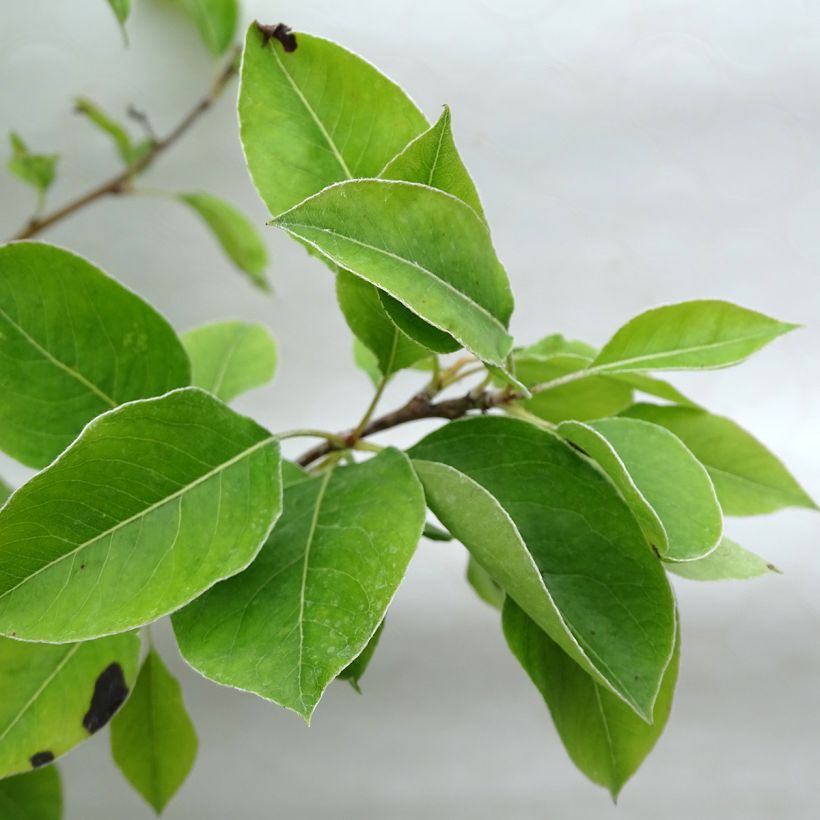

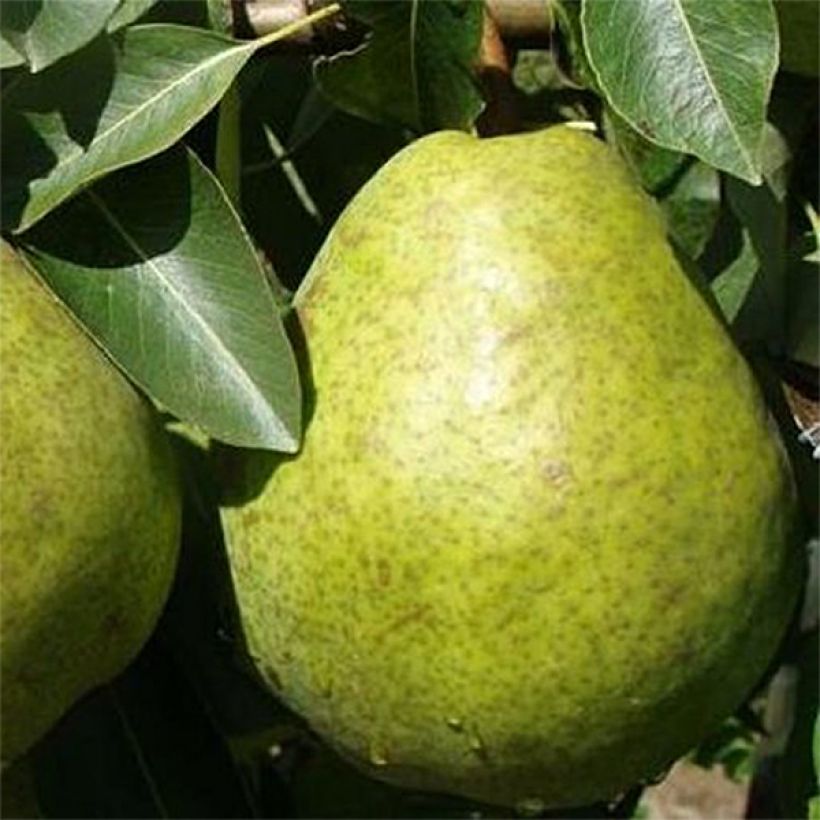

Plant habit
Fruit
Flowering
Foliage
Botanical data
Pyrus
communis
Duchesse d'Angouleme
Rosaceae
Common Pear, European Pear
Western Europe
Other Pear trees
View all →Planting and care
Plant the Duchesse d'Angouleme Pear Tree in a sunny location, in acidic or neutral soil, moist but not excessively. Ensure good drainage in the planting hole with a thin layer of gravel. Dig a hole two to three weeks before planting, twice as wide and deep as the pot. On the day of planting, place the tree with its pot in a basin of water, in order to moisten the entire root ball through capillarity. Add compost to the bottom of the hole. Place the tree in the hole, fill with a mixture of soil and compost. Do not bury the graft union. Firmly tamp down the soil around the base. The root ball should be completely covered. Water generously.
You can add a small handful of wood ash, rich in potash, during winter, to improve fruiting.
Planting period
Intended location
Care
-
, onOrder confirmed
Reply from on Promesse de fleurs
Similar products
Haven't found what you were looking for?
Hardiness is the lowest winter temperature a plant can endure without suffering serious damage or even dying. However, hardiness is affected by location (a sheltered area, such as a patio), protection (winter cover) and soil type (hardiness is improved by well-drained soil).

Photo Sharing Terms & Conditions
In order to encourage gardeners to interact and share their experiences, Promesse de fleurs offers various media enabling content to be uploaded onto its Site - in particular via the ‘Photo sharing’ module.
The User agrees to refrain from:
- Posting any content that is illegal, prejudicial, insulting, racist, inciteful to hatred, revisionist, contrary to public decency, that infringes on privacy or on the privacy rights of third parties, in particular the publicity rights of persons and goods, intellectual property rights, or the right to privacy.
- Submitting content on behalf of a third party;
- Impersonate the identity of a third party and/or publish any personal information about a third party;
In general, the User undertakes to refrain from any unethical behaviour.
All Content (in particular text, comments, files, images, photos, videos, creative works, etc.), which may be subject to property or intellectual property rights, image or other private rights, shall remain the property of the User, subject to the limited rights granted by the terms of the licence granted by Promesse de fleurs as stated below. Users are at liberty to publish or not to publish such Content on the Site, notably via the ‘Photo Sharing’ facility, and accept that this Content shall be made public and freely accessible, notably on the Internet.
Users further acknowledge, undertake to have ,and guarantee that they hold all necessary rights and permissions to publish such material on the Site, in particular with regard to the legislation in force pertaining to any privacy, property, intellectual property, image, or contractual rights, or rights of any other nature. By publishing such Content on the Site, Users acknowledge accepting full liability as publishers of the Content within the meaning of the law, and grant Promesse de fleurs, free of charge, an inclusive, worldwide licence for the said Content for the entire duration of its publication, including all reproduction, representation, up/downloading, displaying, performing, transmission, and storage rights.
Users also grant permission for their name to be linked to the Content and accept that this link may not always be made available.
By engaging in posting material, Users consent to their Content becoming automatically accessible on the Internet, in particular on other sites and/or blogs and/or web pages of the Promesse de fleurs site, including in particular social pages and the Promesse de fleurs catalogue.
Users may secure the removal of entrusted content free of charge by issuing a simple request via our contact form.
The flowering period indicated on our website applies to countries and regions located in USDA zone 8 (France, the United Kingdom, Ireland, the Netherlands, etc.)
It will vary according to where you live:
- In zones 9 to 10 (Italy, Spain, Greece, etc.), flowering will occur about 2 to 4 weeks earlier.
- In zones 6 to 7 (Germany, Poland, Slovenia, and lower mountainous regions), flowering will be delayed by 2 to 3 weeks.
- In zone 5 (Central Europe, Scandinavia), blooming will be delayed by 3 to 5 weeks.
In temperate climates, pruning of spring-flowering shrubs (forsythia, spireas, etc.) should be done just after flowering.
Pruning of summer-flowering shrubs (Indian Lilac, Perovskia, etc.) can be done in winter or spring.
In cold regions as well as with frost-sensitive plants, avoid pruning too early when severe frosts may still occur.
The planting period indicated on our website applies to countries and regions located in USDA zone 8 (France, United Kingdom, Ireland, Netherlands).
It will vary according to where you live:
- In Mediterranean zones (Marseille, Madrid, Milan, etc.), autumn and winter are the best planting periods.
- In continental zones (Strasbourg, Munich, Vienna, etc.), delay planting by 2 to 3 weeks in spring and bring it forward by 2 to 4 weeks in autumn.
- In mountainous regions (the Alps, Pyrenees, Carpathians, etc.), it is best to plant in late spring (May-June) or late summer (August-September).
The harvesting period indicated on our website applies to countries and regions in USDA zone 8 (France, England, Ireland, the Netherlands).
In colder areas (Scandinavia, Poland, Austria...) fruit and vegetable harvests are likely to be delayed by 3-4 weeks.
In warmer areas (Italy, Spain, Greece, etc.), harvesting will probably take place earlier, depending on weather conditions.
The sowing periods indicated on our website apply to countries and regions within USDA Zone 8 (France, UK, Ireland, Netherlands).
In colder areas (Scandinavia, Poland, Austria...), delay any outdoor sowing by 3-4 weeks, or sow under glass.
In warmer climes (Italy, Spain, Greece, etc.), bring outdoor sowing forward by a few weeks.































